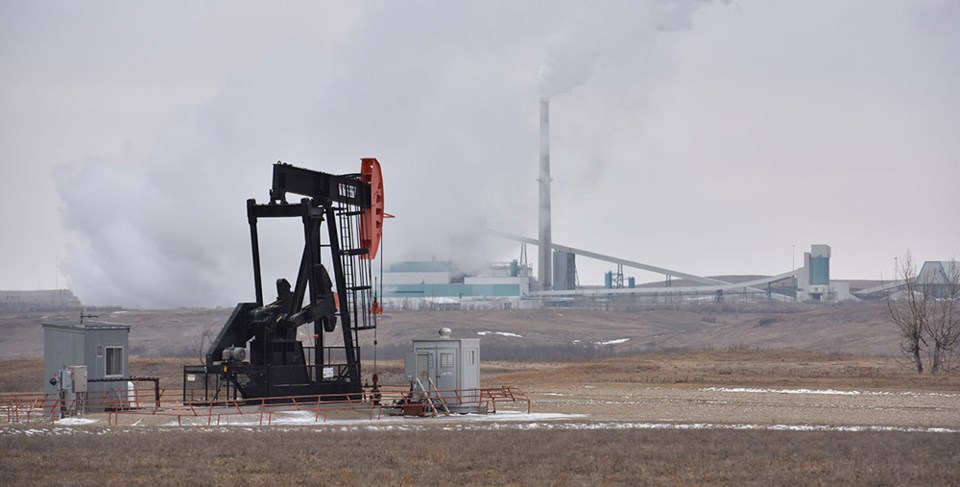You might not have realized it, but on Nov. 26, 2014, the world changed. Saudi Arabia announced it was going to open up the taps and let the market decide the price of oil. It soon plummeted from the $100 per barrel for West Texas Intermediate range it had been that summer, and the $75 per barrel it was that November, down to $26.10 per barrel in February 2016. (All prices in U.S. dollars)
Alberta, Saskatchewan and Newfoundland took a beating that we, in Saskatchewan, have finally clawed ourselves out of, at least when it comes to provincial budgets, if not the oil industry. Our oilpatch has been brutalized. Jobs, wages, companies and capital have all shrivelled up and blown away. As late as last week, I was hearing about certain companies still having a tough go of it.
Then came March 6 of this year. Apparently Saudi Arabia wanted OPEC+ Russia to cut oil production around 1.2 million barrels per day. The Russians said, “Nyet.” So the Saudis said they would dramatically cut the price they are charging their customers, and it sounds like they might increase oil production by as much as two million barrels per day.
To be clear, the difference between US$40 per barrel and US$100 per barrel is an incremental two million barrels per day production, based on global production of around 100 million barrels per day.
When markets opened overseas on the evening of Sunday, March 8, the immediate drop for both West Texas Intermediate, the North American benchmark, and Brent, the world benchmark, was in the range of $10 per barrel. As I type this on Sunday, the drop is $13.30 for WTI, to $27.98, a 32.2 per cent drop since Friday. Brent dropped $13.43, or 29.7 per cent, to $31.84. And that’s after both benchmarks lost $5 per barrel on Friday. On Jan. 7, WTI was Brent was $68.91.
As for that 100 million barrels per day, it, too, is now also dropping like a stone. Just two days before, on March 4, IHS Markit forecast world oil demand could drop 3.8 million barrels per day compared to the year before. This is due to the COVID-19, coronavirus.
Now, why were the Saudis and Russians talking about a supply cut, as oil prices needed a boost? It’s because pretty much every cut in production the rest of the world has made to boost prices has been countered by a corresponding increase in oil production from the United States and its shale basins. According to the International Energy Agency, the United States now produces 13.1 million barrels per day, up 4.5 million barrels per day from August, 2016.
Indeed, in his Feb. 4 State of the Union address, President Donald Trump proclaimed, as I expected he would, the United States is now energy independent.
Yes, they are still importing Canadian oil. But they are also exporting enough that they are net energy independent. We, as Canadians, really need to wake up to the fact that the customer of essentially all of our exported oil really doesn’t need us, or anyone else, anymore.
This is why, in September, when cruise missiles magically appeared from nowhere and struck the largest oil processing facility on the planet, in Saudi Arabia, the United States shrugged. And a few months later, when Iran fired missiles at U.S. bases in Iraq, it shrugged again. There is no more impetus for the United States to get into a war in the Middle East, because it frankly doesn’t need Middle Eastern oil anymore.
Well, maybe. Or maybe not.
Over the past year (with oil north of $50, not in the $30s), the U.S. shale oil industry has been hurting, and hurting badly. Despite more oil coming out of the ground in Texas than Jed Clampett’s backyard, profits have remained elusive. Some people are now talking peak shale oil. A price in the $30s may quickly pop Trump’s energy independence balloon.
A collapsing oil price, if it holds, is going to be devastating to Saskatchewan’s oilpatch, most of which has been just hanging on for over five years. I spoke to someone last week who had been planning to seek additional employees. I’m afraid to ask what will come of that now?
The immediate impact in Saskatchewan is going to be on the upcoming provincial budget. It’s going to be a scramble to keep it balanced with oil taking a dive. If the budget has already gone to the printers, it’s likely out of date before issuance.
Alberta’s recent budget is similarly out of date, and likely immensely so. Do they update it? Make more cuts? Or bring in a provincial sales tax?
If that wasn’t enough, the 11 C temperatures on March 6 meant spring breakup that arrived about 10 days early in Saskatchewan, meaning that drilling and all other activity will drop off dramatically. For many areas, that means two more holes (or more in shallower areas) that could have been drilled per rig, won’t be. And with oil in freefall, it’s unlikely many of those wells will be drilled any time soon.
As you can see, it’s going to be a tough spring in the oilpatch.
Brian Zinchuk is editor of Pipeline News. He can be reached at [email protected].




